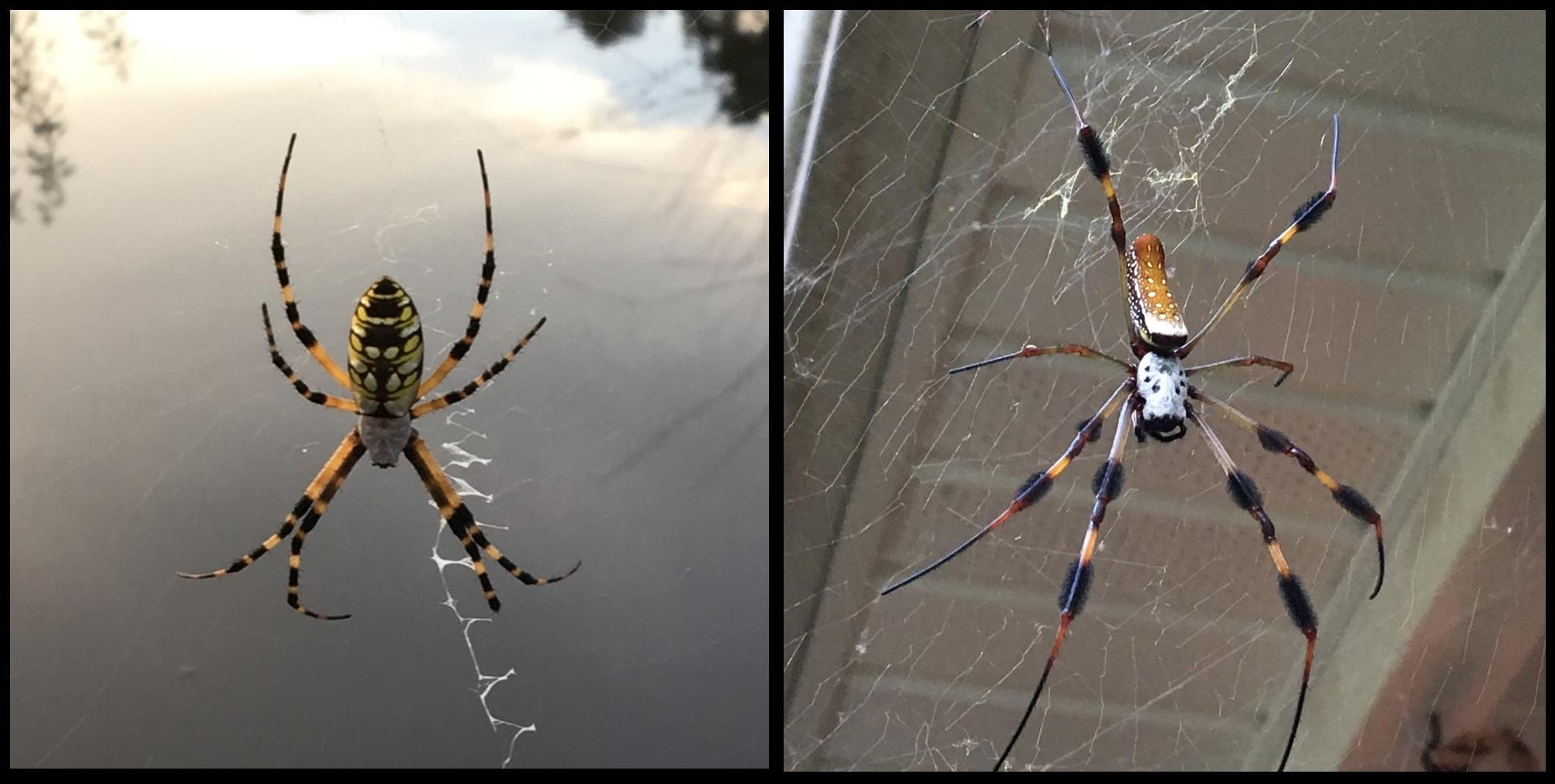I take great pleasure in telling anyone just how cool and beautiful spiders can be. This is especially true for my spider-phobic friends, for whom I have great empathy. I also like to allay the fears of others that have grown up with the belief that spiders are creatures to be feared. Knowledge is power and I hope this tale of a common backyard spider helps calm your fears.
This is also an opportunity for you to hone your skills of observation. As the Sesame Street song goes, “One of these things is not like the others.” This is the case for two of our largest spiders that make their appearance this time of year.

Yellow Garden Spiders and Golden Orb Spiders are some of our larger species that build webs attached to porches, trees and shrubs. They get your attention because of their size, but they are often confused with one another. Here is how you can easily tell them apart.
The Garden Spider occupies a flat, taunt web that has a unique element “written” in silk right in the web. Also known as a Zipper Spider, there is always a zig-zag pattern of white silk laid out vertically in the web. This stabilimentum is the last element that is laid down during web building. As the silk dries it shrinks, pulling the web tight – thus the function of this element of the web. This tight web helps the spider detect even the slightest of vibrations caused by insects hitting the web.
This species has a distinctive yellow, white and black striped pattern on the abdomen and relatively hairless legs. Your challenge is to look for how Golden Orb Spiders are different.
As with many creatures, Yellow Garden Spiders are known by other names, including black and yellow garden spider, golden garden spider, writing spider, zigzag spider, or corn spider. Regardless of what you call them, they are cool and harmless. Stop and take a closer look.
Hope to see you in our great outdoors!